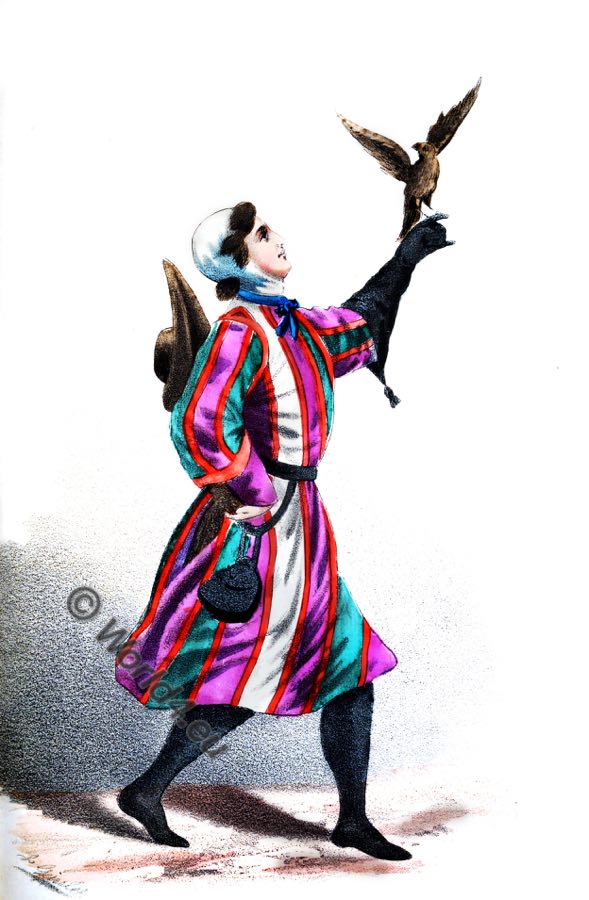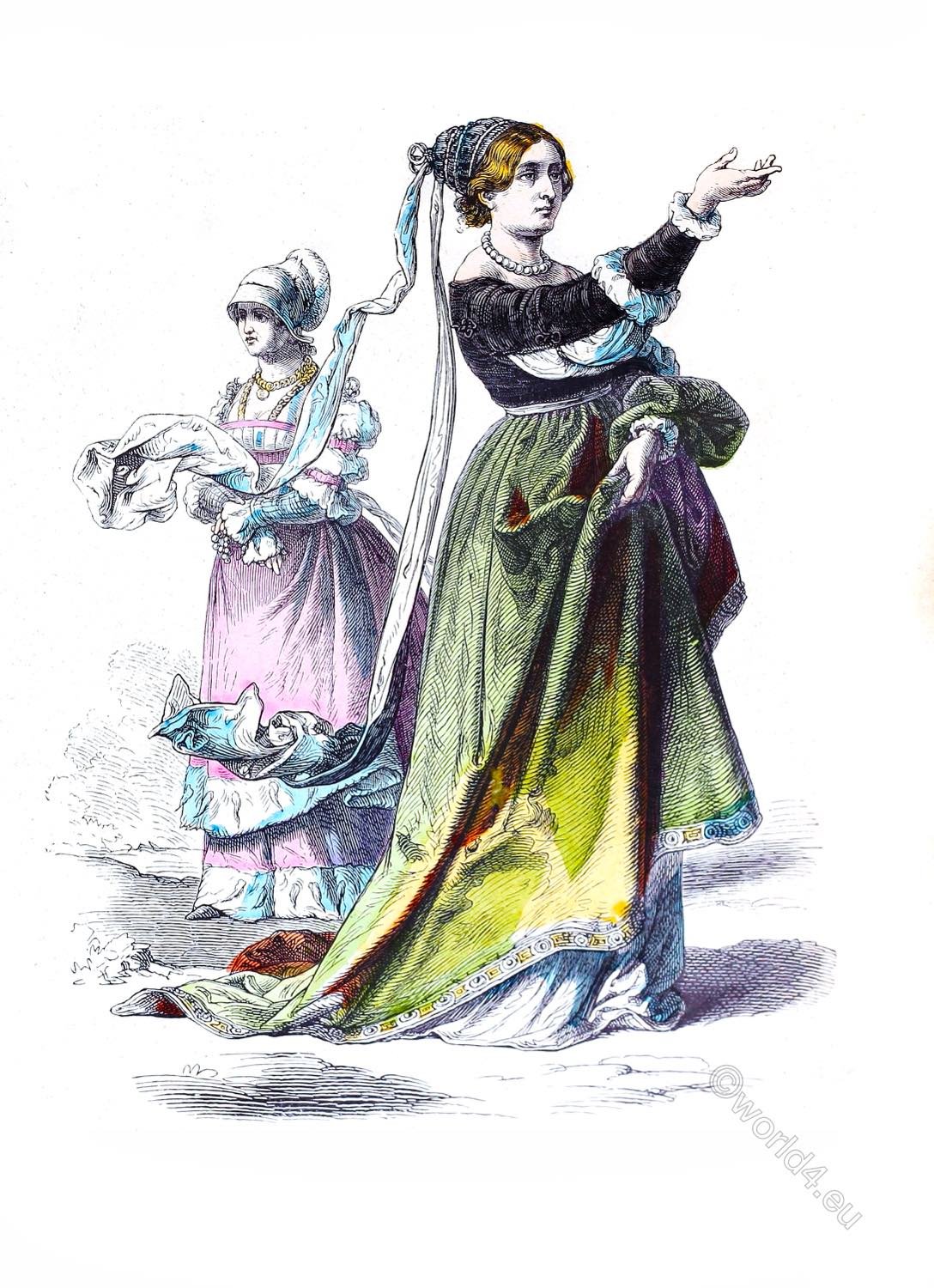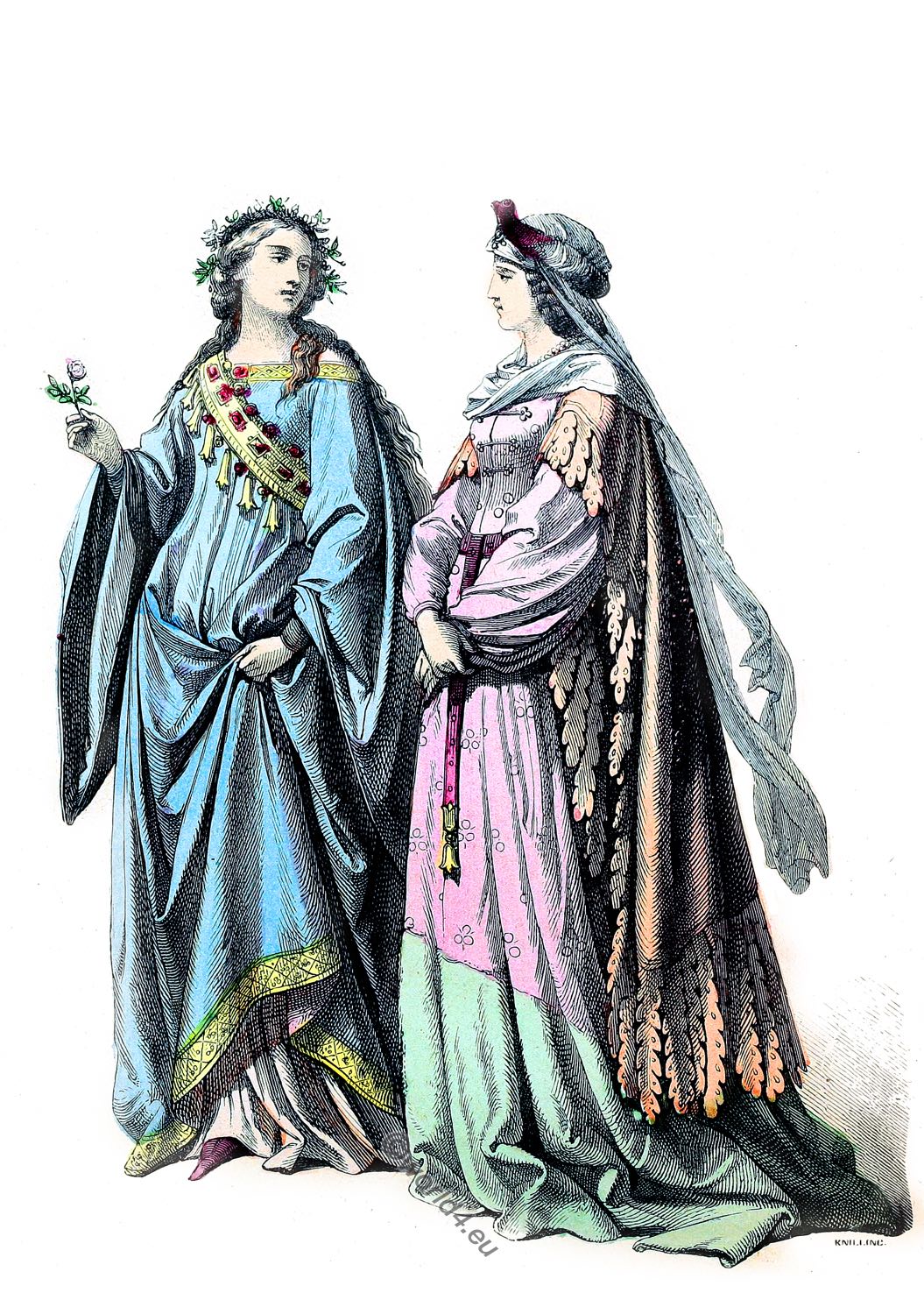On the history of costumes. Thirteenth arch. First half of the XVth century. Münchener Bilderbogen No. 437. Illustration by F. Rothbart.
Clothing of German citizens during the Reformation, 1450.
The man is wearing an overcoat, known in Italy as Zimarra in Germany as Schecke, french pour point. This coat came in different lengths. Among the most distinguished citizens, he reached down to the ankles. Characteristic are the large openings of the sleeves, sometimes up to 50 cm in length, which were often decorated with fur.
The time had two tendencies in the fashion of the clothes. Either certain parts of the body with the type of cut were emphasized or it has been revealed. In this example, the shoulders of the man highlighted what gives it a decent look. This is emphasized further by wearing a beard. The upper portion of the skirt is richly decorated, the section tapering upward, resulting in an increase in the upper part of the body with it, culminating in a high collar. Ending with sumptuous folds down and wide open spaces, above the knees. Small embellishments on the collar, and sometimes the shoes emphasize the dignity of the citizen. Popular were big, heavy gold chains. On his head he wears a beret is adorned houppelande. In the houppelande, a relic of the late Middle Ages, is an arc cut cloth rag in the Middle Ages adorned the hems of the garments. The overall picture in his hand closes the worn, decorative gloves off.
The woman is wearing the robe hanging, the Gamurra, or cotta, with a train made of heavy fabric. The plain cotta or Gamurra was round cut and consisted of long, lush ornamental sleeves, which were usually sewn only slightly and were replaced by it. In addition it carries the elegant Cioppa with ornate hem in bright, clear colors. The Cioppa is worn belted high, with long sleeves and trim is made of a train.
Source: Münchener Bilderbogen 1848 to 1898. On the history of costumes. Published by Braun & Schneider. Royal court and university printing office of Dr. C. Wolf & Sohn in Munich.







